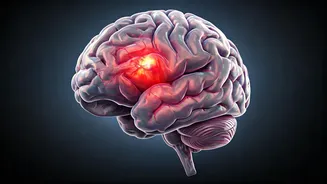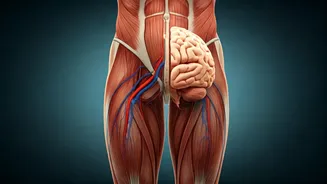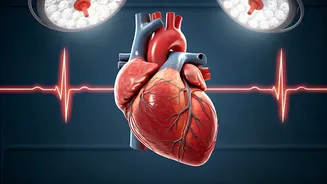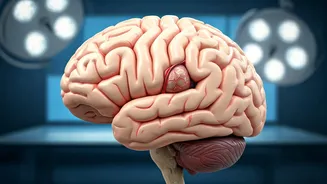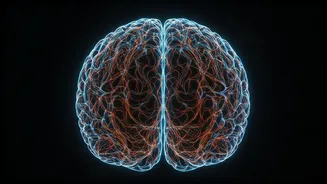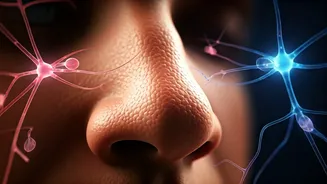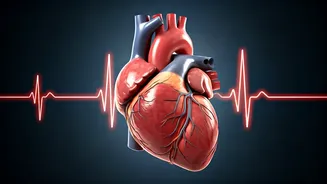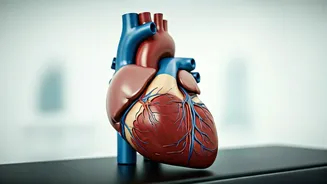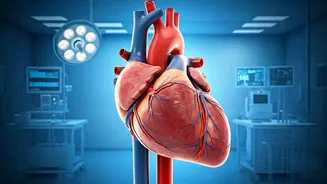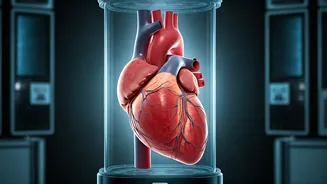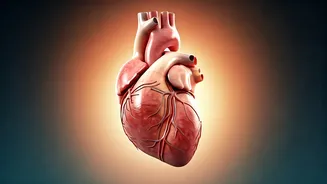What is it?
A brain aneurysm is a bulge or ballooning in a blood vessel within the brain. This typically occurs because a weak spot in the artery wall gives way under
the pressure of blood flow. These aneurysms can vary in size, and while some remain undetected, others may cause significant health problems if they rupture or leak. The primary concern with a brain aneurysm arises from the risk of rupture, which can lead to a subarachnoid hemorrhage, a type of bleeding into the space surrounding the brain. This is a severe, life-threatening situation.
Symptoms to Note
Symptoms of a brain aneurysm can vary based on whether it is unruptured or ruptured. An unruptured aneurysm may produce no noticeable symptoms, especially if it is small. However, larger unruptured aneurysms can sometimes press on brain tissue or nerves, leading to symptoms like headaches, particularly behind the eye, vision changes, or pain above the eye. When an aneurysm ruptures, the onset is often sudden and severe. The main symptom is a sudden, intense headache, sometimes described as the worst headache ever experienced. Other symptoms of a ruptured aneurysm include nausea, vomiting, a stiff neck, sensitivity to light, blurred or double vision, and loss of consciousness. Immediate medical attention is essential if these symptoms are present.
Risk Factors
Several factors can increase the risk of developing a brain aneurysm. These include high blood pressure, which puts added stress on blood vessel walls, and smoking, which damages blood vessels. Family history also plays a role, as having a close relative with a history of aneurysms increases the likelihood. Certain genetic conditions, such as polycystic kidney disease, can also elevate the risk. Furthermore, age and gender can influence susceptibility, with aneurysms becoming more common with age, and women being at a slightly higher risk than men. Additionally, trauma to the head, and illegal drug use, like cocaine, could be factors.
Diagnosis Methods
Diagnosing a brain aneurysm involves several medical procedures. A physical and neurological examination may be conducted to assess overall health and identify any neurological deficits. Imaging techniques are crucial, with CT scans being used to detect bleeding in the brain. Cerebral angiograms, which involve injecting a dye into the arteries of the brain, provide detailed images of the blood vessels, allowing doctors to visualize the aneurysm. In some cases, a lumbar puncture, or spinal tap, may be performed to analyze the cerebrospinal fluid for signs of bleeding. Early and accurate diagnosis is essential for prompt medical intervention and improved outcomes.
Treatment Strategies
The treatment for a brain aneurysm depends on various factors, including the size and location of the aneurysm, as well as the patient's overall health and the risk of rupture. The primary goal of treatment is to prevent the aneurysm from rupturing or to manage the complications of a ruptured aneurysm. The options include surgical clipping, where a small clip is placed at the base of the aneurysm to block blood flow, and endovascular coiling, a minimally invasive procedure where a catheter is used to guide coils into the aneurysm to block blood flow. Medication may also be prescribed to manage symptoms like high blood pressure or to prevent complications, such as vasospasm, which can occur after a rupture. Regular monitoring through imaging may be necessary to assess the success of treatment and to watch for any changes.
Lifestyle Adaptations
Certain lifestyle changes can help in the prevention and management of brain aneurysms. Quitting smoking is crucial, as smoking damages blood vessels and increases the risk of aneurysm formation and rupture. Maintaining a healthy blood pressure through diet, exercise, and, if necessary, medication, is also vital. A balanced diet low in saturated fats and cholesterol supports overall cardiovascular health, which is beneficial for brain health. Regular exercise can improve blood vessel function and reduce the risk of aneurysm formation. Regular medical check-ups and open communication with a healthcare provider can help in the early detection and management of risk factors and the condition itself.
